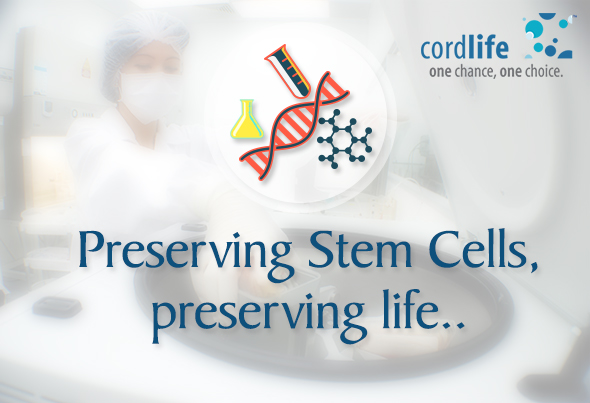Table of Contents
The biggest gift you can bestow on your child is the chance of a long and healthy life – by preserving your baby’s stem cells.
The birth of your baby was a landmark event in your life. But rewind to the time that your child emerged from the womb. That was the moment when you gave your child the biggest treasure of all – the gift of his cord blood, perfectly preserved for his future.
“I did a lot of research on stem cell banking and spoke to my doctor about it,” says Maithili Rajguru (34), a mother of two. “We tried cord blood banking for my second child; I was unaware of the procedure during my first pregnancy five years prior. It was important to take this basic step to safeguard her future,” she says.
Stem cell preservation is catching on all over the country, even in the smaller towns, where over 20 people register for it with private cord blood banks every month[1]. The fact that it poses no danger to the mother and child is a big draw among patients, says Dr Jinal Thakkar, obstetrician. “Of all the questions I am asked about it, the leading one is: Will it hurt my baby? It is important to explain to parents about the entire process of cord blood collection and preservation,” she adds.
The process is a simple one: moments after the birth, the umbilical cord is cut and clamped. The cord blood is then collected in a special bag. Once the bag reaches the stem cell bank, the cells are isolated and the red blood corpuscles and plasma are removed from the blood unit. The cells are frozen and preserved for a period of 21 years. In the meantime, the baby’s cells are given to the parents whenever needed, but only with a doctor’s prescription and reference.
Rehan Mistry enrolled on stem cell banking two years ago. “Cancer runs in my wife’s family. Our doctor told us that stem cells cannot treat every cancer, but by the time my son grows up, science will have found an answer to every problem,” he explains.
Stem Cells for Research
Stem cell preservation techniques are being refined for research and clinical trials. The process presents unique challenges – the protocols for preserving Haematopoietic Stem Cells (HSC) do not hold true for preserving Mesenchymal Stem Cells (MSC)[2], for example. The biology of different stem cells is different, thus the preservation methods must be able to conserve that unique biology over a long period.
Several researchers are currently conducting trials on the utility of Mesenchymal Stem Cells (MSC) in understanding the origins of disease and also for formulating stem cell-based treatments. Meanwhile, bone marrow has been found to be a rich repository of MSC that is currently being studied for cardiac tissue and muscle repair, among other things.
[1] Kislaya, Kelly, ‘More stem cells preserved now’, The Times of India, October 27, 2013
[2] Hanna, Jacob and Hubel, Allison, ‘Preservation of stem cells’, Organogenesis Journal, July-September 2009
